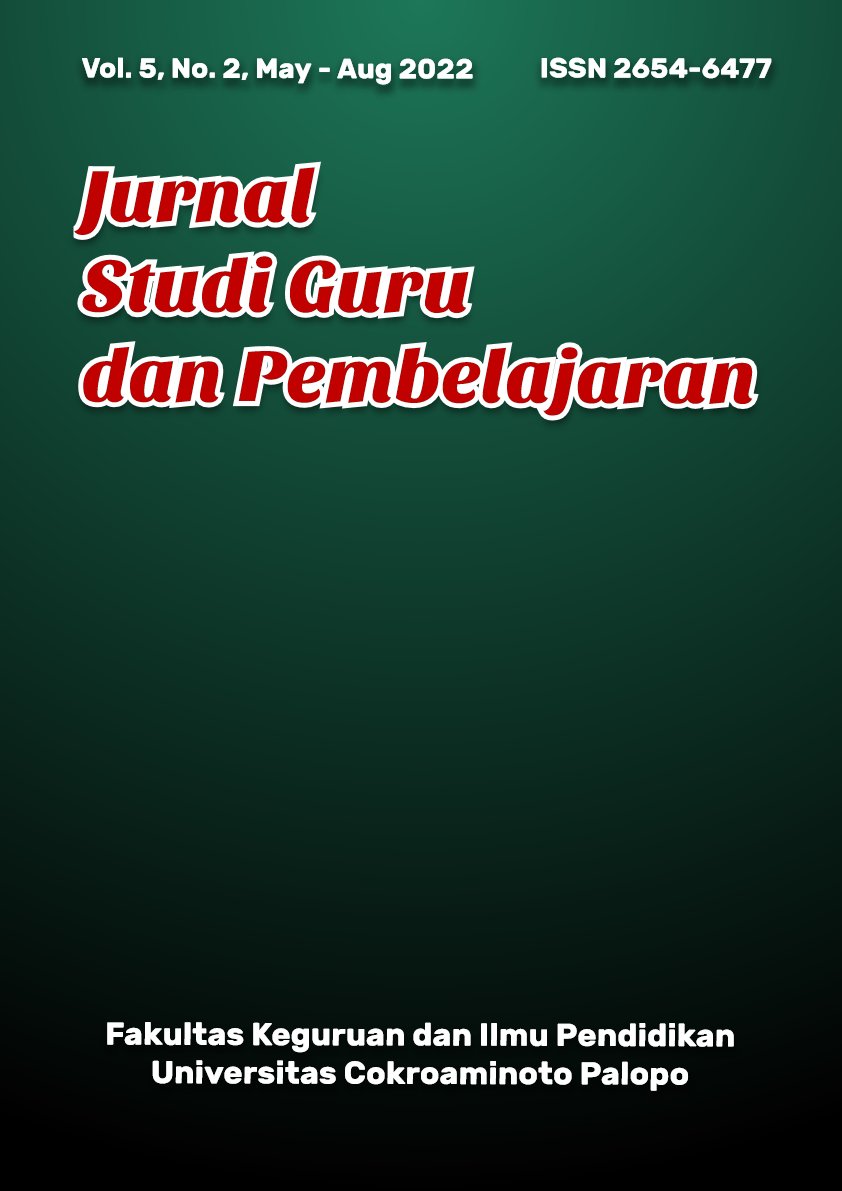The The Use of Fine Art Activity Strategies in Mastering Vocabulary at Al-Hidayah Boarding School Depok West Java
DOI:
https://doi.org/10.30605/jsgp.5.2.2022.1984Keywords:
Fine Art, Vocabulary, English, Boarding SchoolAbstract
Art is a person's creative phenomenon to express themselves in an event. It can be found in music, by hand, in the appearance of drama, or even in vocal sports. In learning, students often find problems that originate within themselves or originate in their environment. The problems that originate within themselves can be a lack of interest in reading, a lack of vocabulary, or a shortage of visual aids that make it easier for them to grasp science. The purpose of this study in al-Hidayah. Boarding School is to learn the arts of fine arts strategy for effectively mastering vocabulary. The methods used in this scientific work are those of quantitative research, data exploration, experimental design, and survey. Experiments were carried out to reinforce the initial hypothesis that with fine arts, vocabulary study was easier to understand. Surveys provide excellent databases for scientific reference. As for the results of this study being a fine art strategy for mastering vocabulary effectively, students can understand the vocabulary learned from teachers, and they can choose their way to select the correct vocabulary in translating, antonyms, word translations, or hyponyms.
Downloads
References
Adhawati, R., & Candra, E. N. (2018). The Effectiveness Of Fine Art Activity On Students’speaking Ability. Lingua: Jurnal Ilmiah, 14(2), 1-14.
Alqahtani, M. (2015). The Importance of Vocabulary in Language Learning and How to Be Taught. International Journal of Teaching and Education, 3(3), 21–34.
Ary. (2014), Introduction Research in Education Ninth Edition, 265.
Brezovnik, A. (2017). The Benefits of Fine Art Integration into Mathematics in Primary School. Center for Educational Policy Studies Journal, 5(3), 11–32.
Carter, Ronald, & Michael M. (2014). Vocabulary and Language Teaching. Vocabulary and Language Teaching, 170–73.
Chumark, Charung, & Vichian P. (2016). Developing Basic Mathematical Skills of Pre-School Children by Using Plasticized Clay. Journal of Education and Practice 7 (12): 180–83.
Creswell, J. W. (2014). 1999 منشورات جامعة دمشق Research Design Qualitative Quantitative, and Mixed Fourth Edition, 142.
Gay & Geoffrey E. M., (2018). Educational Research: Competencies for Analysis and Application Twelfth Edition, 372.
Hanrahan, M. (1998). The effect of learning environment factors on students’ motivation and learning. International Journal of Science Education, 20 (6), 737–753.
Hayikaleng, N., Nair, S. M., & Krishnasamy, H. N. (2016). The Students Motivation on English Reading Comprehension. Utara Malaysia University: Malaysia, International Journal of Education and Research. 4(6), 477-483.
Kearsley, G. & Shneiderman, B. (1998). Engagement Theory: A framework for technology-based learning and teaching. Educational Technology, 38(5), 20-23.
Moeller, Aleidine J., & Theresa C. (2015). Foreign Language Teaching and Learning. International Encyclopedia of the Social & Behavioral Sciences: Second Edition, 327–32.
Olagbaju, O. O., & Popoola, A. G. (2020). Effects of Audio-Visual Social Media ResourcesSupported Instruction on Learning Outcomes in Reading. International Journal of Technology in Education, 3 (2), 95.
Polatcan, F., ER, O., & Coban, I. (2021). An Analysis of Relevant Studies on Language Learning Strategies in Teaching Turkish as a Foreign Language. Shanlax International Journal of Education, 9, 68–76.
Saengpakdeejit, R. (2014). Strategies for Dealing with Vocabulary Learning Problems by Thai University Students. Silpakorn University Journal of Social Sciences, 14 (1): 147–67.
Sharipova, F. N. (2020). Teaching Vocabulary as an 59 Important Way of Learning Language. International Journal on Integrated Education, 2 (6), 234–36.
Terasne. (2017). The Effectiveness Of Using Word Map Technique In Teaching Vocabulary at Third Grade Students Of IKIP Mataram In Academic Year 2015/2016. 135.
Winarto, W., Syahid, A., & Saguni, F. (2020). Effectiveness of the use of audio visual media in teaching islamic religious education. International Journal of Contemporary Islamic Education, 2 (1), 81.
Downloads
Published
How to Cite
Issue
Section
License
In submitting the manuscript to the journal, the authors certify that:
- They are authorized by their co-authors to enter into these arrangements.
- The work described has not been formally published before, except in the form of an abstract or as part of a published lecture, review, thesis, or overlay journal.
- That it is not under consideration for publication elsewhere,
- That its publication has been approved by all the author(s) and by the responsible authorities – tacitly or explicitly – of the institutes where the work has been carried out.
- They secure the right to reproduce any material that has already been published or copyrighted elsewhere.
- They agree to the following license and copyright agreement.
License and Copyright Agreement
Authors who publish with JSGP agree to the following terms:
- Authors retain copyright and grant the journal right of first publication with the work simultaneously licensed under Creative Commons Attribution License (CC BY-SA 4.0) that allows others to share the work with an acknowledgement of the work's authorship and initial publication in this journal.
- Authors are able to enter into separate, additional contractual arrangements for the non-exclusive distribution of the journal's published version of the work (e.g., post it to an institutional repository or publish it in a book), with an acknowledgement of its initial publication in this journal.
- Authors are permitted and encouraged to post their work online (e.g., in institutional repositories or on their website) prior to and during the submission process, as it can lead to productive exchanges, as well as earlier and greater citation of published work.














